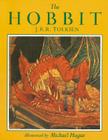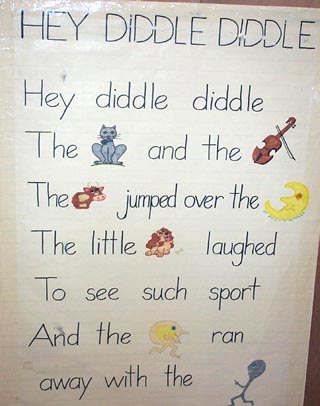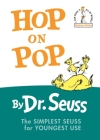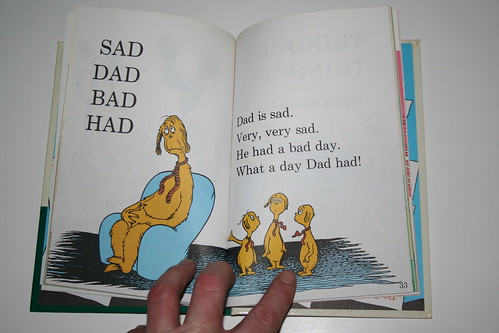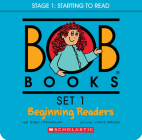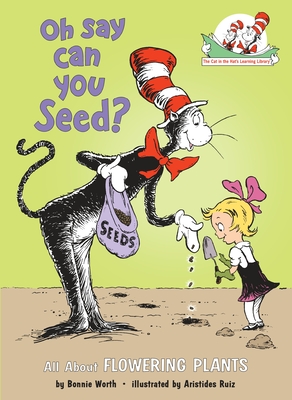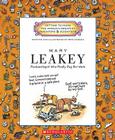I have some thoughts on books about edgy issues, and will post about them soon. Right now, I have one more addition to our discussion of teaching kids to read. Our guest blogger tonight is Clara, mom of Isabel's good friend Vera, and a kindergarten teacher here in New York. I asked her a few weeks ago to weigh in on the subject, and here she is:
Dear Annie,
I'm glad you asked for me to guest blog about learning to read. As a teacher of kindergarten and first grade for six years, I work every day to teach all kinds of readers how to read, love books and feel confident in their reading abilities. Very close to my heart is also helping parents feel confident in their role as their child's first and most important teacher.
I'm so excited for you and Eleanor that she is learning to read! Obviously both of your girls have a big love of books, which is no surprise. That Eleanor can read at her age is special and should definitely be encouraged. I'm also relieved to hear of your awareness that too much pressure could be bad for her, and even poor book choices could dampen her interest.
 When parents ask me advice for encouraging and teaching their children to read at home, I give different advice depending on the age and type of child they have. For a child who shows no interest in learning how to read, I suggest immersing them in highly engaging books based on their interest (chosen for content rather than reading level, for parents to read with the child) to nurture a love of books. This will soon enough turn into a motivation to read independently. Books like The Yucky Reptile Alphabet Book, by Jerry Pallotta, will have a young naturalist's rapt attention, and happen to sneakily also teach letter recognition and phonemic awareness! For a child who desperately wants to read but is anxious and possibly behind his or her peers (or siblings), books should be made by the parents and children or selected very carefully from a book store. These books should include just a few words that the child can figure out from the pictures so that the child feels success right away and doesn't get discouraged by any struggle yet. A book like this may be homemade with family photos, with text like "Mommy loves me," "Grandpa loves me," and so on. After the child "reads" that book from memory, the parent can ask the child to point under each word next time he or she reads, so the child starts to get the idea that one word on the page matches to one spoken word, and begins to naturally pick up on cues like looking at the first letter.
When parents ask me advice for encouraging and teaching their children to read at home, I give different advice depending on the age and type of child they have. For a child who shows no interest in learning how to read, I suggest immersing them in highly engaging books based on their interest (chosen for content rather than reading level, for parents to read with the child) to nurture a love of books. This will soon enough turn into a motivation to read independently. Books like The Yucky Reptile Alphabet Book, by Jerry Pallotta, will have a young naturalist's rapt attention, and happen to sneakily also teach letter recognition and phonemic awareness! For a child who desperately wants to read but is anxious and possibly behind his or her peers (or siblings), books should be made by the parents and children or selected very carefully from a book store. These books should include just a few words that the child can figure out from the pictures so that the child feels success right away and doesn't get discouraged by any struggle yet. A book like this may be homemade with family photos, with text like "Mommy loves me," "Grandpa loves me," and so on. After the child "reads" that book from memory, the parent can ask the child to point under each word next time he or she reads, so the child starts to get the idea that one word on the page matches to one spoken word, and begins to naturally pick up on cues like looking at the first letter. 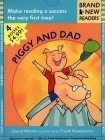 And finally, for eager young readers who are naturally beginning to crack the code like your Eleanor, I suggest getting started with short and repetitive books with a high level of picture support. All of the books in the Brand New Readers series, which can be found online and in bookstores, fit that bill. In school, we use books that are even more reliant on a pattern. For example, a book called "Who Lives in a Tree?" may have only 8 pages following the pattern of "A squirrel lives in a tree. A bird lives in a tree. A raccoon lives in a tree," and so on. These books are great for school, but are nearly impossible for parents to find outside of a specialized catalogue. Also, they are incredibly short and boring to read more than once or twice. My five year old students who are reading books at that level read 8 to 10 of those books every week in their personal "book baggie," and exchange the books for new ones once a week. Books like the Brand New Readers have a story, and recurring characters. I use them less at school because they often appear to be very easy, but break the pattern that a child has predicted so that the child needs adult support which they can't have 100% of the time at school. Perfect for reading at home! Rereading books at this stage is so crucial for memorizing high frequency words, so the more fun the stories are, the more likely your child will want to read them over and over.
And finally, for eager young readers who are naturally beginning to crack the code like your Eleanor, I suggest getting started with short and repetitive books with a high level of picture support. All of the books in the Brand New Readers series, which can be found online and in bookstores, fit that bill. In school, we use books that are even more reliant on a pattern. For example, a book called "Who Lives in a Tree?" may have only 8 pages following the pattern of "A squirrel lives in a tree. A bird lives in a tree. A raccoon lives in a tree," and so on. These books are great for school, but are nearly impossible for parents to find outside of a specialized catalogue. Also, they are incredibly short and boring to read more than once or twice. My five year old students who are reading books at that level read 8 to 10 of those books every week in their personal "book baggie," and exchange the books for new ones once a week. Books like the Brand New Readers have a story, and recurring characters. I use them less at school because they often appear to be very easy, but break the pattern that a child has predicted so that the child needs adult support which they can't have 100% of the time at school. Perfect for reading at home! Rereading books at this stage is so crucial for memorizing high frequency words, so the more fun the stories are, the more likely your child will want to read them over and over.
For home reading and teaching of reading, I would move from books like that to books that are often called "level 1" in book stores. I think your Aunt Debbie has pointed out that all publishers use different criteria for their so-called levels, which drives parents mad. What I suggest looking for is again high interest books, but also books that are SHORT. The classic early reader Danny and the Dinosaur, by Sid Hoff, for example, is 64 pages long. Not short! Others, like this Scholastic Level 1 reader, have half the pages, and more importantly only a sentence on each page.
Books like Dr. Seuss' Hop on Pop are in fact exhaustingly long. While it does a good job of teaching short vowel spelling patterns, no child aged 4 to 6 has the stamina to read it! Early chapter books can be challenging at first, so I recommend books that children think have chapters, but really have separate stories, like the Poppleton series by Cynthia Rylant. As a gauge, in New York City Poppleton is the level we want first graders to be reading between spring and June of first grade.
This was a very long letter to a mom who sounds like she knows what she's doing already. But it's so important to check ourselves as parents, especially when we realize we have been presented with a child who is either ahead of or behind the curve for their age group. I am far too wordy in my letter writing today, but if you had insisted I write a one sentence piece of advice to parents on teaching their children to read, it would be this: "Read together, every day." For a child who associates reading with love will not find it difficult to love to read.
Best wishes on your reading adventures!
Thanks, Clara!
Love, Annie
Love, Annie












